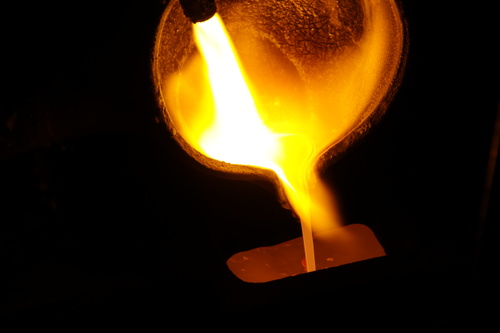What is Ethical Gold?
The most surprising news to come out of Baselworld (the main Jewellery Wholesale Fair) this year was that, as of July 2018, Chopard will be using 100% ethical gold in its jewellery and watches. For such a big brand to make such a significant commitment is cause for celebration, and a big step forward for the ethical jewellery movement. But it has left many wondering: what actually is ethical gold?
I have been committed to ethics in the jewellery sector for more than 12 years and, for me, the definition is pretty simple: it is gold that is sustainable. In my business, there are currently three options that meet this criteria – certified Fairtrade gold, certified Fairmined gold and 100% recycled gold. But when you look at Chopard’s definition of ethical gold – “Gold acquired from responsible sources, verified as having met international best practice environmental and social standards” – it is broader and, unfortunately, less rigorous.
The source of Chopard’s ethical gold includes artisanal mines that are part of the Fairmined and Fairtrade schemes. So far, so good. It is the second origin of Chopard’s so-called ethical gold, RJC Chain of Custody gold, that I have to object to, though. Sourced through the company’s partnership with RJC-certified refineries, it does not, I believe, meet the standards required to be classified as ethical gold and should not be described as such.
A recent article written by Advocacy Directory Jo Becker for Human Rights Watch (HRW) explains why this is the case. In it, Becker points out:
“The RJC plays a very important role in the jewelry industry, but its standards do not yet represent industry best practices. While the standard requires companies to document the transactions by which they acquire their gold, it does not require them to conduct human rights assessments on the ground. This means that the gold could still be mined under abusive conditions, such as child labor.”
The RJC CoC is a responsible code of conduct, but it’s not as sustainable as the other options like Fairtrade and Fairmined. Artisanal mining and responsible sourcing specialist Levin Sources, explains the differences between being "responsible" and being "sustainable" in her latest blog "Responsible versus Sustainable sourcing" (worth a read!).
I agree with Becker that the Responsible Jewellery Council is doing a great job moving the jewellery industry forward in terms of ethics, but we must be very careful not to compromise the powerful message that accompanies ethical gold. While Chopard has used its voice effectively to promote ethical gold on a world stage, it is vital that we question Chopard’s decision to label the RJC Chain of Custody gold it will be using as ethical.
“Ethical is subjective while sustainable is defined in the Sustainable Development Goals SDGs from the United Nations”. Estelle Levin. Levin Sources.
I’m certain that customers who have made the decision to buy ethical gold will assume that the human rights of those who mined the precious metal are protected and there is a watertight story of sustainability behind their purchase. To dilute the definition of ethical gold will result in disillusionment among customers and undermine the fantastic work of organisations such as Fairtrade and Fairmined who are committed to producing 100% ethical gold.
For more information or images:
www.arabellebrusan.com
E: arabel@arabellebrusan.com
T: 0794 694 2350
@arabellebrusan
We are most responsive via twitter or email.
About Arabel Lebrusan. Beauty in Design, Craftsmanship and Ethics
Arabel Lebrusan took her Masters in Jewellery Design at Central St Martins and went on to become Creative Director at Leblas Jewellery, leaving two years later to create her own brand of unique designs. Arabel commissions only the best craftsman in the UK and her native Spain and insisting on precious metals and gemstones that have been sustainably and ethically sourced.
www.arabellebrusan.com
